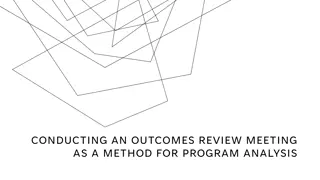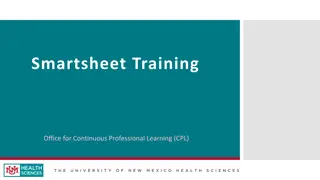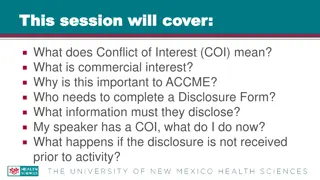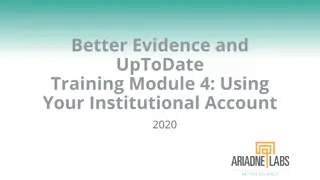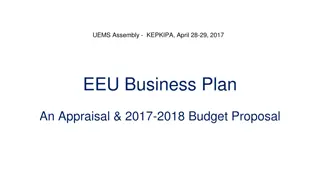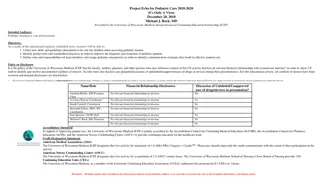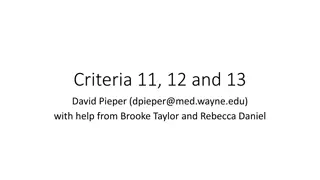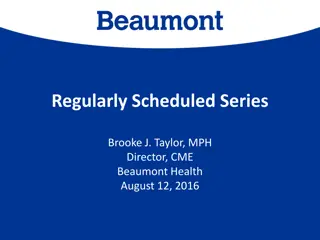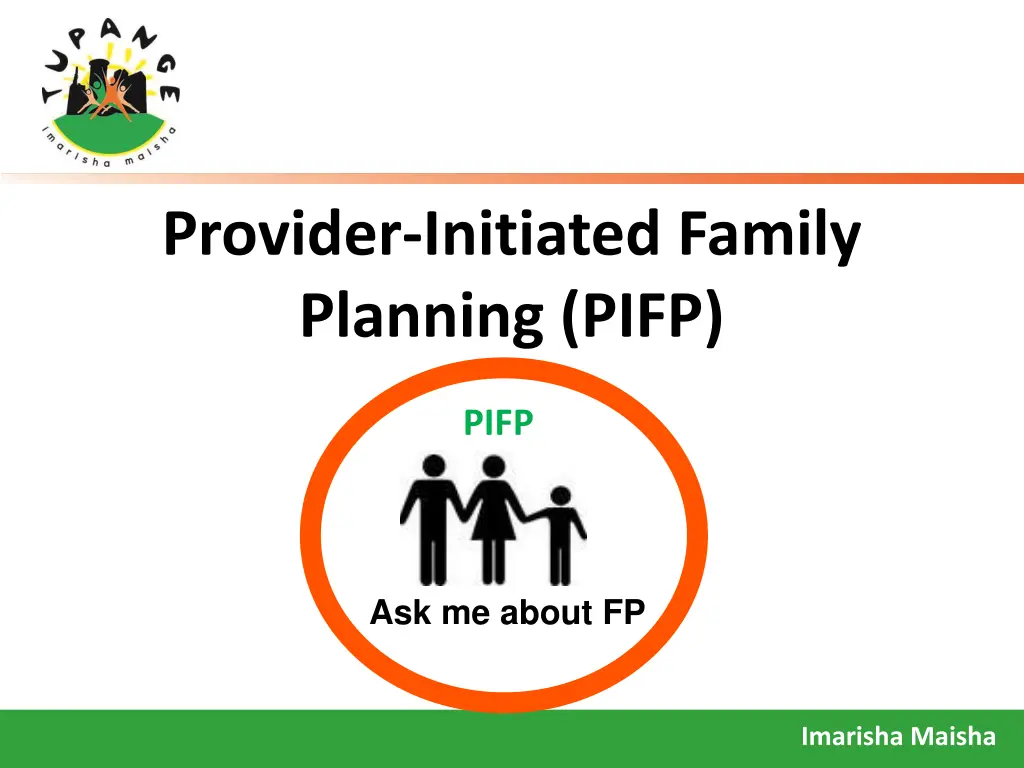
Understanding Provider-Initiated Family Planning (PIFP) Approach
Provider-Initiated Family Planning (PIFP) is a strategy recommended by healthcare workers to offer family planning services during routine medical care. It aims to reduce missed opportunities for family planning, integrate services effectively, and identify clients' unmet needs. Learn about the rationale, benefits, process, screening questions, and implementation of PIFP to enhance family planning services in clinical settings.
Download Presentation

Please find below an Image/Link to download the presentation.
The content on the website is provided AS IS for your information and personal use only. It may not be sold, licensed, or shared on other websites without obtaining consent from the author. If you encounter any issues during the download, it is possible that the publisher has removed the file from their server.
You are allowed to download the files provided on this website for personal or commercial use, subject to the condition that they are used lawfully. All files are the property of their respective owners.
The content on the website is provided AS IS for your information and personal use only. It may not be sold, licensed, or shared on other websites without obtaining consent from the author.
E N D
Presentation Transcript
Provider-Initiated Family Planning (PIFP) PIFP Ask me about FP Imarisha Maisha
What is PIFP ? Refers to family planning provision which is recommended by health care workers to women and men of reproductive age attending health care facilities as part of routine medical care The main purpose is to ensure no missed opportunity to offer FP It is a new strategy to improving integration of FP services in clinical settings
Rationale for PIFP Assists to identify clients unmet need for Family Planning and make client aware of FP Facilitates integration of FP and other clinical services Is a cost effective approach for clients
Benefits of PIFP To Clients Client is able to determine his/her need for FP Is cost effective as client is able to get multiple services during the same visit Reduces risk of unwanted pregnancies To service providers Assists to comprehensively meet client FP needs Helps offer better quality service To health facility Leads to increased FP uptake in all service areas
The PIFP Process PIFP Determine client s FP needs Use the 4 screening questions Ask me about FP FP service includes 1. FP information and counselling 2FP method provision 3. Linked referral (within/outside facility) Provision of FP service In appropriate tools (FP register, Mother Child Booklet ) Documentation
Screening Questions for FP need These set of guided questions help service provider quickly identify who needs FP information, counselling, service and/or referral Q1 Do you have children ? Q2 Would you like to have a child soon ? Q3 Are you using any FP method? Q4 Do you want to use an FP method? (See screening job aid for details)
Implementation of PIFP 1. Conduct whole-site orientation of health facility staff (clinical and non-clinical) on family planning Identify service areas within the facility where PIFP can be implemented Train service providers in these areas on PIFP approach including orientation on job-aids, data tools and referral tools Provide supporting IEC materials, job aids, badges ( ask me about FP ) Identify a PIFP champion in the department /facility to fast-track implementation Conduct periodic trainee follow-up and mentorship visits to address service provider challenges Conduct supportive supervision for quality assurance Review records and track referrals to evaluate FP uptake 2. 3. 4. 5. 6. 7. 8.
Who can Provide PIFP Provider/ Method Male/Femal e Condom Pills (COCs, POPs, ECs) LAM Injectable SDM IUCD/Im plants Permanent method (BTL, NSV) Info, counsel & Provide Info, counsel & Provide Info, counsel & Provide Info, counsel & Provide Info, counsel & Provide Info, counsel & Provide Info, counsel & Provide Medical Doctor Info, counsel & Provide Info, counsel & Provide Info, counsel & Provide Info, counsel & Provide Info, counsel & Provide Info, counsel & Provide Info, counsel and refer Nurse/Mid wife Info, counsel & Provide Info, counsel & Provide Info, counsel & Provide Info, counsel & Provide Info, counsel & Provide Info, counsel & Provide Info, counsel and refer Clinical Officer Info, counsel & Provide Info, counsel & provide Info, counsel & Provide Info, counsel, sell refer for injection Info, counsel & Provide, refer Info, counsel, sell, refer Info, counsel and refer Pharmacy Staff Other clinical staff (nutritionist s, PHTs) Info, counsel & Provide Info, counsel & provide Counsel, support, refer Info, Counsel & refer Info, counsel, provide, refer Info, Counsel & refer Refer CHW Adapted from Kenya National FP Guidelines, 2010
Possible Integration Areas Each health facility will decide the level of integration Possible integration sites; MCH, HIV Counseling and Testing CCC, Out Patient Department, PAC, Maternity, TB clinic, ANC
Potential Challenges Increased workload for service providers-Increased uptake of FP will eventually reduce client load Untrained service providers in FP provision- RoutineCMEs will update all service providers in FP Increased time taken with one patient-will eventually reduce client load No registers to collect FP data-Tupange to provide tools for data collection and orientation on the same
Monitoring and data collection Number of clients receiving FP at various service points Number of patients being referred for FP from specific service points (within and outside the facility)

